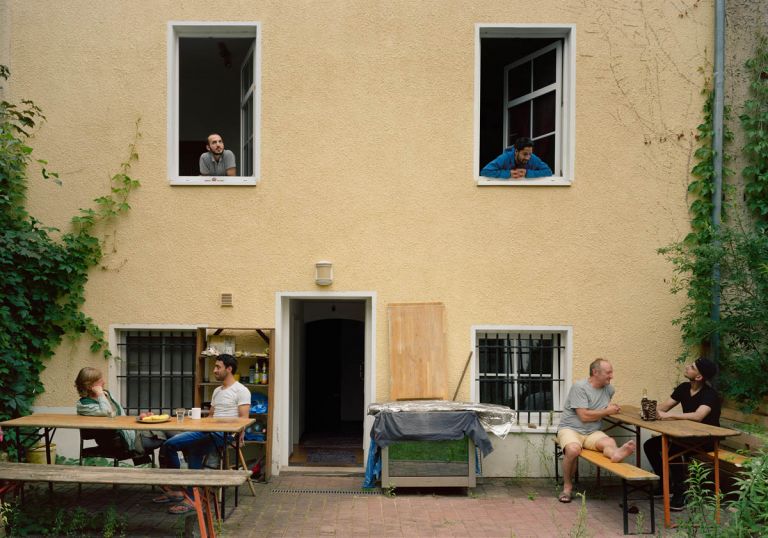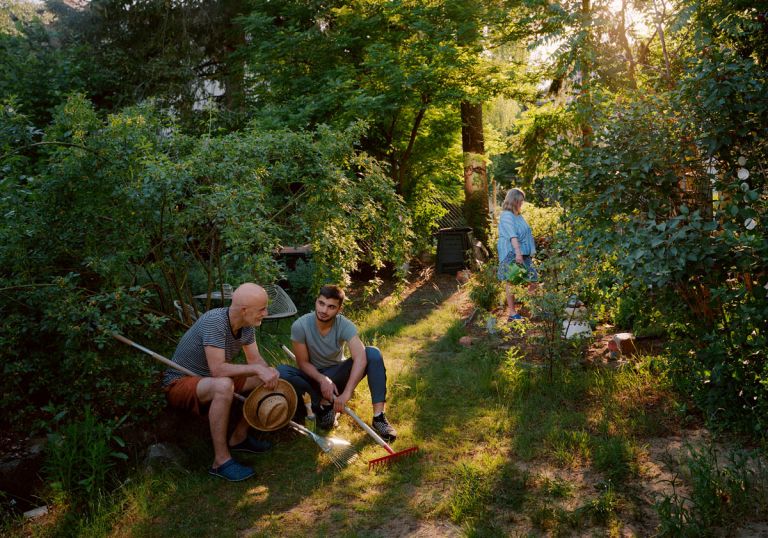“Refuge” focuses on the integration of migrants in Germany after the massive influx in 2015. To counter the images widely seen in the media portraying masses of people or refugees in camps devoid of individuality, I turned my camera to what happened behind closed doors and photographed Germans and refugees who peacefully live together under one roof, for example families who have taken in a minor, couples who have formed romantic relationships, and flats shared by several roommates. These new domestic constellations are built on a sense of trust between Germans and migrants, and an openness to negotiate their differences in habits, food, culture and religion.
The discourse about immigration often characterizes refugees as archetypes such as invaders, victims or heroes. In these photographs, I break from those categories and portray migrants as regular individuals who perform domestic activities with their German roommates. I focused on Germany because of its unique role in the refugee crisis, and “Refuge” is as much about the German hosts as about the refugees. Rather than looking at otherness, “Refuge” emphasizes togetherness of the individuals who learn from one another at eye-level. Ultimately, I aim to convey a sense of shared humanity that transcends politics.
Establishing trust with my sitters is a fundamental part of my artistic process, which is in essence collaborative. I asked the participants of “Refuge” about their experiences living together, for example what they had learned from each other, and the photographs were directly informed by those stories. Stylistically, I chose to create constructed, staged photographs in order to raise questions about the social constructions of identity, family, home and gender.
“Refuge” is a hopeful project about intercultural understanding and peaceful coexistence in a world that is fractured and in need of connection, even more so after months of isolation due to the coronavirus pandemic.














